Natural Convection From Heat Sink Fins CFD, A Fluent Validation Study
Natural Convection From Heat Sink Fins CFD, A Fluent Validation Study
- Upon ordering this product, you will be provided with a geometry file, a mesh file, and an in-depth Training Video that offers a step-by-step training on the simulation process.
- For any more inquiries regarding the product, please do not hesitate to reach out to us at info@CFDLAND.com or through our online support assistant.
€360 Original price was: €360.€185Current price is: €185.
In many electronic devices, heat sinks work without any fans. This process is called natural convection, a form of passive cooling. The heat sink gets hot, warms the air around it, and because hot air is lighter, it rises. This movement creates a natural air current that carries heat away, keeping the electronics at a safe temperature. A successful Heat Sink Fins CFD simulation allows engineers to see and improve this buoyancy-driven flow.
The purpose of this project is to perform a detailed Natural Convection From Heat Sink Fins CFD VALIDATION. This means we are building a simulation to check our accuracy against a known, trusted source. We will compare our results with the numerical data from the published paper “Revisit on the natural convection from horizontal multi-channel rectangular-fin heat sinks” by Liou, et al. [1].
- Reference [1]: Liou, Hung-Jyun, Shwin-Chung Wong, and Yi-Cheng Lin. “Revisit on the natural convection from horizontal multi-channel rectangular-fin heat sinks.” International Journal of Thermal Sciences171 (2022): 107232.
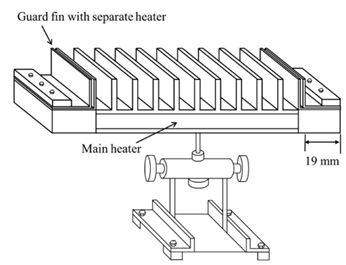
Figure 1: The experimental setup of the heat sink used in the reference paper [1].
Simulation Process: CFD Modeling of Heat Sink Natural Convection in Fluent
The foundation of an accurate simulation is a careful and precise setup. First, the 3D model of the heat sink was created using ANSYS Design Modeler. A large rectangular box was drawn around the heat sink to represent the surrounding air. Using ICEM software, this entire space was filled with a high-quality, structured mesh containing 2,217,120 cells. A fine mesh is essential for capturing the small changes in temperature and air velocity.
The physics of the simulation were then configured in ANSYS Fluent. A key part of modeling Natural Convection From Heat Sink Fins is to tell the software how temperature changes air density. For this, the Boussinesq model was activated. This important model links the temperature of the air to the force of gravity, which is what creates the natural upward flow. The flow was assumed to be laminar, which is typical for these slow, buoyancy-driven air currents.
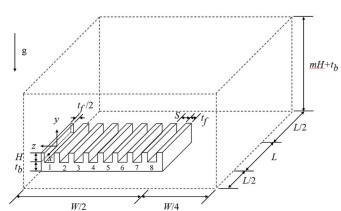
Figure 2: The computational domain showing the heat sink placed within the larger air volume for the simulation [1].
Post-Processing: CFD Analysis of Natural Convection From Heat Sink Fins
The results of our simulation show an extremely close match to the reference data, confirming the model’s high accuracy. The key performance metric was the heat transfer coefficient (hss) for the individual channels of the heat sink. For Channel 1, our simulation predicted an hss of 3.07 W/m²K, compared to the paper’s value of 3.11 W/m²K, which is an error of only 1.3%. Similarly, for Channel 2, our result of 3.45 W/m²K was nearly identical to the paper’s 3.49 W/m²K, an error of just 1.1%. This outstanding agreement is the most important outcome of this Heat Sink Fins Fluent validation.
| h (paper) | h (CFD Simulation) | Error | |
| Channel 1 | 3.11 | 3.07 | 1.3% |
| Channel 2 | 3.49 | 3.45 | 1.1% |
The temperature and velocity contours provide a powerful visual story of the physics at work. The temperature contour shows that the heat sink fins are the hottest part of the system, reaching a peak temperature of 3.58E+02 K (85°C) at their base. This heat is the engine driving the entire flow. As the air near the fins heats up, it becomes less dense and begins to rise. The velocity contour shows the direct result of this effect: a thermal plume of rising air develops above the heat sink, reaching a maximum velocity of 5.10E-01 m/s. This clear visual link—from the high temperatures on the fins to the rising plume of air—perfectly illustrates the process of Natural Convection Heat Transfer and demonstrates the model’s ability to accurately predict the thermal performance.
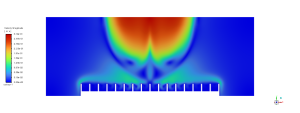
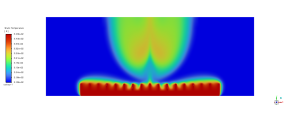
Figure 3: Velocity field (top) and temperature distribution (bottom) from the Natural Convection From Heat Sink Fins CFD simulation, showing the rising thermal plume caused by the hot fins.
We pride ourselves on presenting unique products at CFDLAND. We stand out for our scientific rigor and validity. Our products are not based on guesswork or theoretical assumptions like many others. Instead, most of our products are validated using experimental or numerical data from valued scientific journals. Even if direct validation isn’t possible, we build our models and assumptions on the latest research, typically using reference articles to approximate reality.
Yes, we’ll be here . If you have trouble loading files, having technical problems, or have any questions about how to use our products, our technical support team is here to help.
You can load geometry and mesh files, as well as case and data files, using any version of ANSYS Fluent.
€190 Original price was: €190.€99Current price is: €99.

€190 Original price was: €190.€95Current price is: €95.

€240 Original price was: €240.€125Current price is: €125.

€265 Original price was: €265.€135Current price is: €135.

€200 Original price was: €200.€115Current price is: €115.

€200 Original price was: €200.€125Current price is: €125.















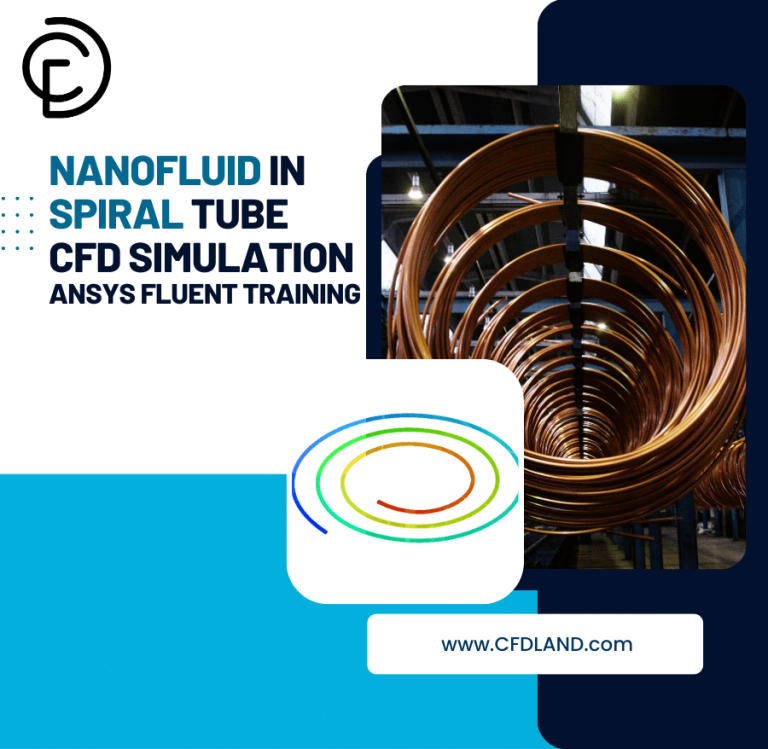
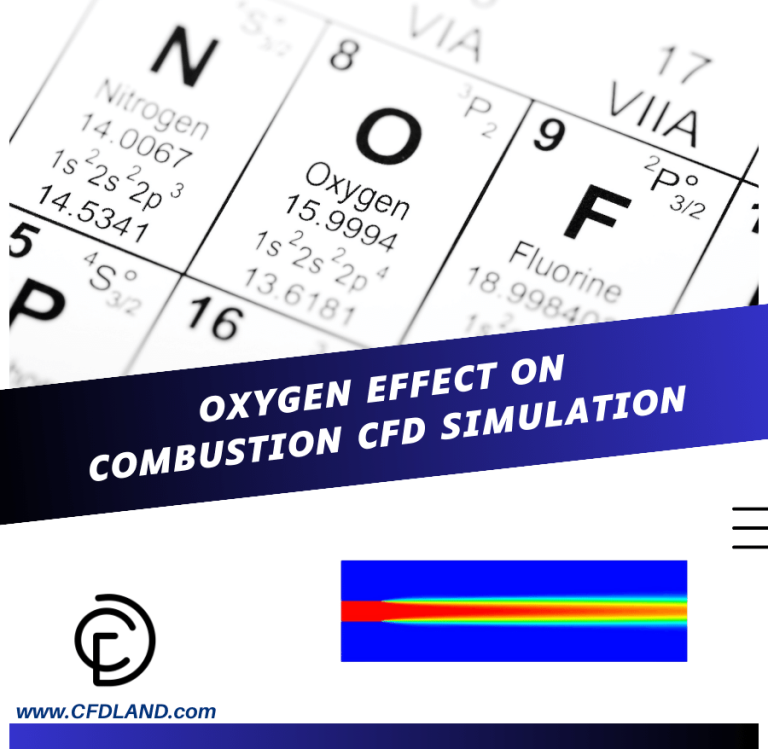




Reviews
There are no reviews yet.